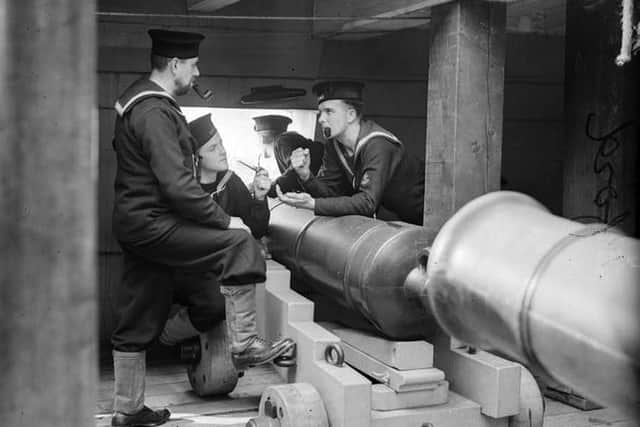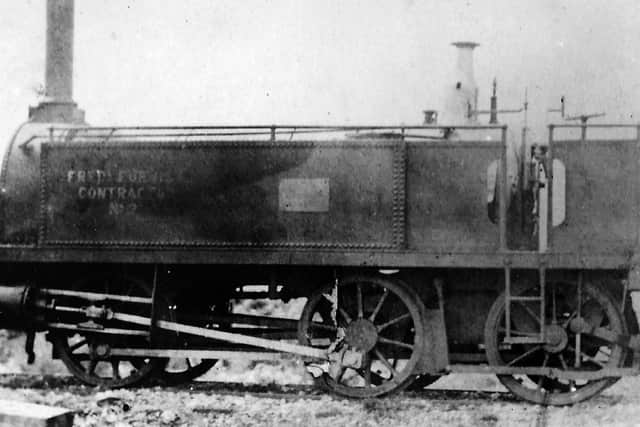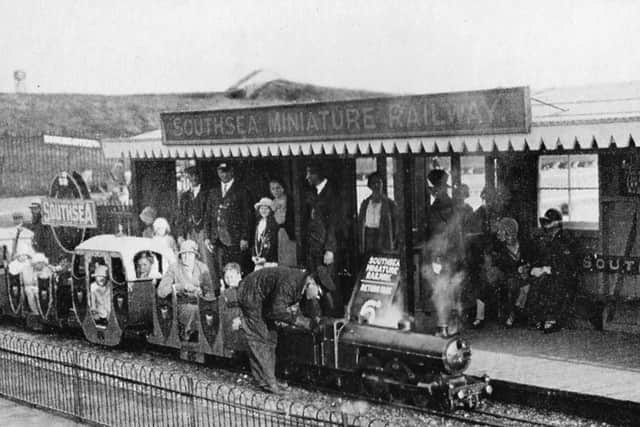Portsmouth’s M275 is now bumper to bumper with cars but it used to be mudflats


Step forward Mike Nolan. We spoke on the phone while looking at this enlargement of the left of the photo and Mike pointed out the crane at the end of pier and the flight of steps leading to the water. On the left there is also a slipway with a boathouse behind it.
Between the island and the distant bushes we are looking due east and in the mud is where the M275 now runs. In the left distance is Port Creek.
Advertisement
Hide AdAdvertisement
Hide AdOn another note, Barry Cox who loaned the card tells me the photo was not from 1886. That was the photographer’s reference number. On the reverse of the postcard is a date stamp for 1936 although the photo could have been taken much earlier of course.


The photograph, below left, shows four sailors on board HMS Victory, most probably at stand easy (tea break) and on their cap tallies it reads HMS. This tells us it is wartime as the tallies were not allowed to show the ship’s name the sailors were serving on for obvious reasons, thus just HMS.
They are wearing the long gunnery gaiters as opposed to the short version.
Imagine trying to have a smoke on board the Victory today.
Railway historian Alan Wallbank tells me he is putting on a film show at the Gosport Railway Club on the Friday, February 15, starting at 7.30pm. The first film is about the closure of the Hayling Billy, but starts with the lead up to closure. The second film is the history of the Southsea Miniature Railway.


Advertisement
Hide AdAdvertisement
Hide AdThe Gosport Railway Society Club meets in the Methodist Church, Stoke Road, Gosport, not far from the old Gosport Station.
Entrance to the film show is free so do try and make the effort.
In the 1920s photograph, on the opposite page, all the staff are in railwaymen uniforms complete with gold watch-chains and caps. I am sure the man to the left would be the stationmaster. It must have been a joy to work there.
The train appears to have just arrived from its circular route and the locomotive would have been drawn forward for turning on the turntable just out of shot to the right. The return fare was 6d.


Advertisement
Hide AdAdvertisement
Hide AdThe picturesque carriages were later replaced with open trucks which is how I remember them in the late 1950s. The round trip was only sixpence in old money.
Believed to be one of the first, if not the first, locomotive to run from Havant is the Frederick Furness Contractor 0-4-2T, below right. It had a box-like saddle tank and 3ft 6in coupled wheels.
It was in service from 1865 to 1870 when it was withdrawn.